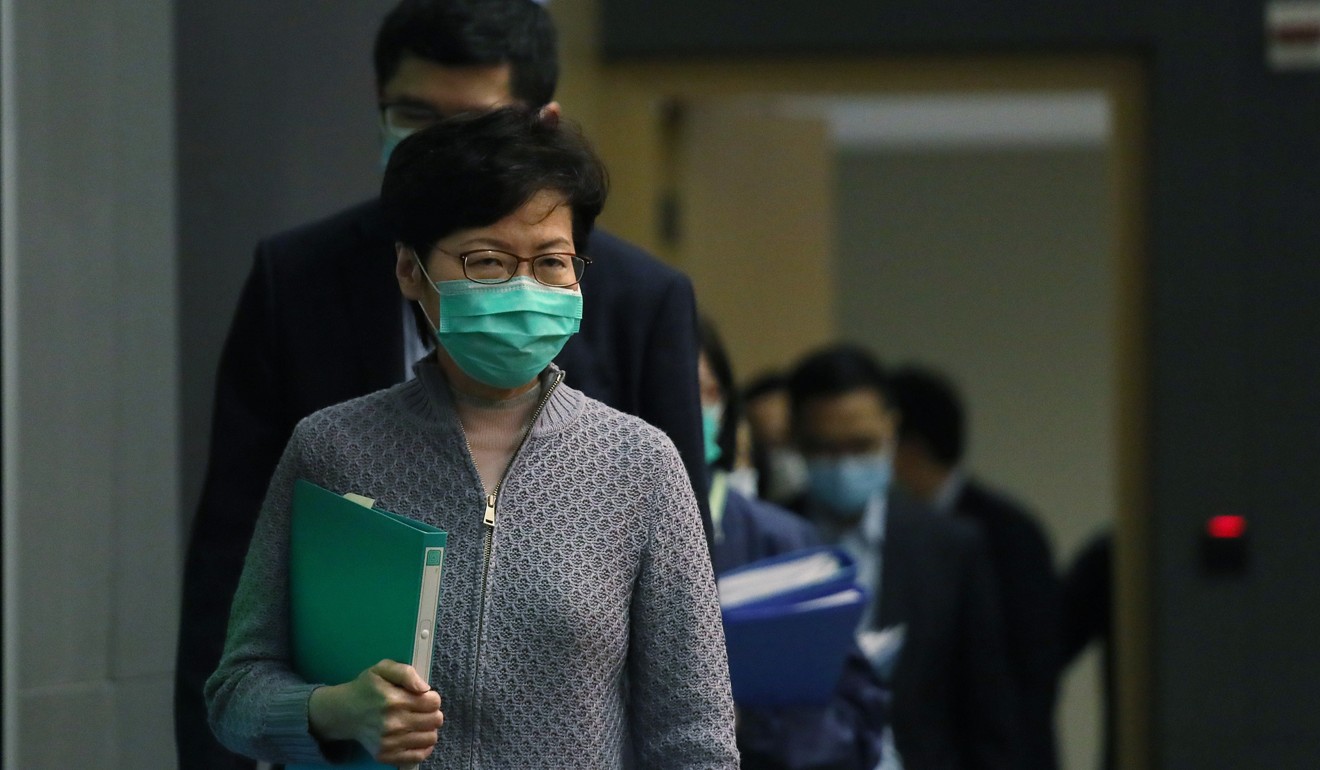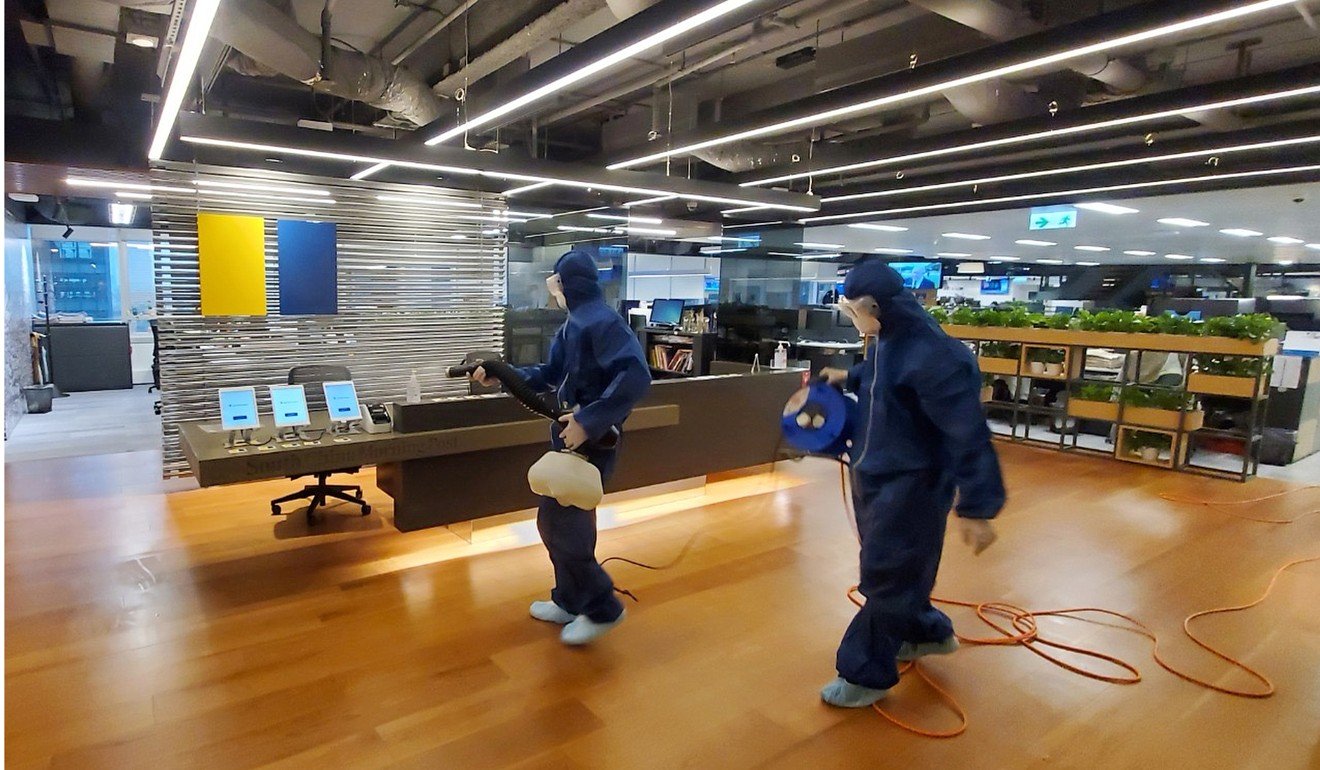
Working from home is the new normal under coronavirus threat – might as well embrace it
- People have long been talking about how technology is changing the way we live and work in an era of digitisation, but in reality it’s not so simple
- The Post started daunting task of total work-from-home arrangement last week, and it was a success because of firm’s digital transformation and staff efforts
“[Most] civil servants will start to work from home from Monday, March 23 [until further notice],” Chief Executive Carrie Lam Cheng Yuet-ngor announced on Saturday, along with her decision to step up quarantine measures against a second wave of Covid-19 cases.
It was a relief to see Hong Kong’s leader wearing a surgical mask throughout the press conference this time, in sharp contrast to her earlier public appearances without one.
While her earlier refusal to put on a mask was well-intentioned – to help save much sought-after supplies for frontline medical staff – but counterproductive in sending mixed signals to a jittery public about taking precautions, the changed approach signalled the severity of what the city was facing in the war against the coronavirus pandemic.

Timely and necessary as the new quarantine measures were, when it came to the part about her civil service colleagues having to return to work-from-home arrangements, Lam’s defence sounded like a Freudian slip on the part of the government’s thinking, or perhaps society’s as a whole: “If the government continues from the end of January to stop providing services to the public … what will happen now?”
She did have a point in suggesting that government efficiency was affected when offices providing public services were not physically manned.
Coronavirus latest: Singapore shuts border to visitors; Malaysia deploys troops
During the first round of working from home from February until early March, even the Inland Revenue Department, jokingly described by taxpayers as “the most efficient” government branch in chasing after your money, had to delay its tax returns submission deadline.
So how much can actually be counted as real “work” when employees are doing it from home? How do we measure the productivity of the tens of thousands of civil servants with different kinds of jobs? How is the private sector to follow suit? It’s not so simple.
People have long been talking about how technology is changing the way we live and work in an era of digitisation, but reality can be quite another experience.
We at the Post started working from home last week – three days before Lam announced a return to the arrangement for the civil service – due to an unfortunate infection that forced a total shutdown of our headquarters in Causeway Bay, one of Hong Kong’s busiest commercial districts.
Hong Kong records 44 new coronavirus cases, including 20-month-old child
It came as a real challenge – we had to start a 100 per cent work-from-home arrangement, something we had never done before, unlike earlier in February when individuals and teams took turns to commute to work because they needed to deal with critical editorial and technical issues best tackled from the office itself.
The task is daunting – organisation, coordination and communication can be a nightmare when everyone is at home – but we continue to provide comprehensive news coverage through our flagship products both online and in print, thanks to the digital transformation of the whole company and the tireless efforts of staff who constantly go the extra mile to get the job done against all odds.
Teleconferencing, endless messaging and emailing, webinars, distance interviews, online editing and designing, working on little laptops instead of the multiple screens set up on the office – it can get overwhelming sometimes.

There is also a perception that working from home is a luxury, allowing employees to take it easy and attend to personal matters during office hours, so employers can be understandably concerned, even if that may not be the case.
Our industry peers at home and abroad are doing what the Post is. RTHK, the city’s public broadcaster, has already asked all its guest hosts and non-essential staff to work from home by dialling in, while its television programmes no longer have a studio audience. Other news publications have staff working by remote, too.
This is a world in crisis, and developments are fast-changing. The latest warning from mainland China’s medical experts, including the well-recognised professor Zhang Wenhong, is clear: no room for complacency at all until at least the end of the year.
Working from home is likely to become the new normal, as we face the reality and adapt to the changes we have to make.
What lies ahead is unpredictable, but what is certain is that both the government and the private sector must be well prepared and equipped with updated technology to cope.
Hopefully we can turn adversity into advantage and use this momentum to take Hong Kong’s lagging “smart city” drive forward.
Purchase the China AI Report 2020 brought to you by SCMP Research and enjoy a 20% discount (original price US$400). This 60-page all new intelligence report gives you first-hand insights and analysis into the latest industry developments and intelligence about China AI. Get exclusive access to our webinars for continuous learning, and interact with China AI executives in live Q&A. Offer valid until 31 March 2020.

